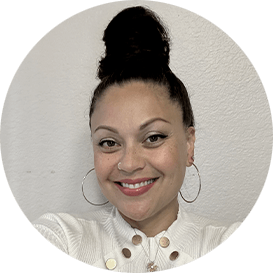For decades, mental health experts have recognized cognitive behavioral therapy (CBT) as the first line, most effective psychotherapy for anxiety. The components of CBT – which include specific techniques and methods to recognize and reform maladaptive patterns of though and cognitive distortions – work together to reduce symptoms and improve quality of life for people with anxiety disorders.
CBT is effective for mild, moderate, and severe anxiety.
However, with an increase in awareness of mental health disorders and a reduction in stigma around treatment for mental health disorders – in part caused by the COVID-19 pandemic, and in part caused by simple social progress – there’s a renewed interest in exploring alternative approaches to CBT. Specifically, the past twenty years have been characterized by an increase in what treatment professionals call 3rd Wave Cognitive behavioral therapies such as acceptance and commitment therapy (ACT) and mindfulness-based cognitive therapy (MBCBT).
Despite this increase in the prevalence and application of these new types of CBT, almost no research exists that compares standard CBT, 3rd Wave CBT, and other psychotherapeutic approaches to determine a treatment hierarchy that includes the new approaches.
A study published earlier this year changes, fills gaps in the data, and offers us new evidence regarding the best and most effective types of psychotherapy for anxiety disorders.
Psychotherapy and Anxiety: Do the New Treatments Work?
Before we answer that question, let’s make sure we understand what we mean when we say anxiety or clinical anxiety disorder.
The Diagnostic and Statistical Manual of Mental Disorders (DSM-5) defines the feature that unites all anxiety disorders as follows:
“A persistent, excessive fear or worry in situations that are not objectively or inherently dangerous.”
The National Institute of Mental Health (NIMH) and the World Health Organization (WHO) show the following prevalence rates of anxiety disorders in the U.S. and worldwide:
United States:
- 65 million people, or over 30% of adults 18+ – receive a diagnosis for anxiety at least once during their lifetime
- 40 million people, just over 20% of adults 18+ – have anxiety that severely disrupt their daily lives
- 43% of adults 18+ with anxiety received treatment
Worldwide:
- Over 300 million people, or around 5% of world population – have clinical anxiety at some point during their lives
It’s important for us to understand what these prevalence rates mean: millions of people in the U.S. and world have a clinical anxiety disorder that disrupts daily life. The consequences of untreated anxiety include:
- Difficulty maintaining stable relationships with family members
- Difficulty forming and maintaining stable relationships with peers
- Turbulent relationships with spouses/romantic partners
- Decrease in work performance
- Decrease in academic performance/ambition/attainment
- Difficulty seeking and maintaining work/employment
- Increased alcohol/substance use
- Suicidal ideation/suicidal behavior
- Non-suicidal self-injury/self-harm
Those are serious consequences. When we consider those consequences in light of the fact that over half of people diagnosed with anxiety receive treatment – 57 percent receive no treatment at all – we realize that millions of people in the U.S. and around the world have a mental health condition that can severely compromise their life satisfaction, wellbeing, and quality of life. In fact, in the most extreme cases, untreated anxiety increases risk of suicide.
[Note: if you or someone you know is at imminent risk of harm, call 911. If they’re having a mental health crisis and not at imminent risk, call 988. Never ignore talk of suicide.]
The most common types of anxiety disorder include:
- Generalized anxiety disorder (GAD)
- Social anxiety disorder (SAD)
- Separation anxiety
- Agoraphobia
- Panic disorder
- Specific phobias
This article will focus on the most commonly diagnosed anxiety disorder: generalized anxiety disorder. Let’s take a look at a new study that shares the latest insight on what works and what doesn’t for people with clinical anxiety.
New Research: Which Type of Psychotherapy is Best for Anxiety?
The research team involved in the study we mention in the introduction – “Psychotherapies for Generalized Anxiety Disorder in Adults: A Systematic Review and Network Meta-Analysis of Randomized Clinical Trials” posed this research question:
Which psychotherapies are associated with the most effective and acceptable outcomes for adults with generalized anxiety disorder?
To answer the question, they performed a network meta-analysis on random controlled trials (RCTs) that compared the long- and short-term outcomes associated with various types of psychotherapy for adults diagnosed with generalized anxiety disorder (GAD).
After performing an exhaustive search of available research and applying rigorous exclusion criteria, researchers identified over 60 studies including information from more than 5,000 participants. They divided the participants into a control group and an experimental group. The control group received treatment as usual (TAU) or were placed on a treatment waiting list. The experimental group engaged in one of the following eight types of psychotherapy:
Behavior therapy:
This group engaged in exposure therapy to reduce symptoms of anxiety.
Cognitive behavioral therapy (CBT):
This group engaged in standard CBT, which involves making connections between thought, emotion, and behavior. CBT therapists help patients identify problematic patterns of thought and help them replace them with productive patterns of thought.
Cognitive restructuring:
This is a component of CBT wherein therapists help patients identify cognitive distortions and maladaptive thoughts and replace them with productive, helpful thoughts based on objective facts.
Psychoeducation:
This involves offering patients information about their disorder, rather than engaging them in any type of therapy or treatment.
Psychodynamic therapy:
This approach focuses on identifying and resolving intrapersonal, subconscious conflicts that may contribute to or exacerbate symptoms of anxiety
Relaxation therapy:
Therapists teach patients various physical relaxation techniques in order to reduce the physical symptoms of anxiety, and thereby improve psychological and/or emotional symptoms
Supportive psychotherapy:
Patients in this group received nonspecific psychological support and treatment
Third-wave CBTs:
These types of CBT include new variations of CBT such as acceptance and commitment therapy (ACT) and mindfulness-based cognitive behavioral therapy (MBCBT) delivered without the standard accompanying elements of CBT, which include exposure therapy, cognitive restructuring/retraining, breathing exercises, and relaxation training)
Additional details on studies and study participants
- Total studies examined: 66
- Total participants: 5,597 patients
- By gender:
- Female: 70%
- Male: 30%
- Average age: 42
- Duration of studies:
- 12 weeks or less: 24
- 13-16 weeks: 23
- 27-56 weeks: 8
- Number of treatment sessions:
- 4-8: 24 studies
- 9-12: 23 studies
- 13-30: 19 studies
- Focus of study:
- Anxiety: 37
- Generalized anxiety disorder (GAD): 27
- Worry: 2
That’s everything we know about this meta-analysis.
Now let’s take a look at what the researchers found.
Psychotherapy for Anxiety: What Works Best?
There’s plenty of good news here for treatment providers and patients with anxiety: we’ll explain after we share the results.
The Most Effective Psychotherapies for Anxiety
Third-wave CBTs (ACT, MBCBT):
- Superior symptom reduction, compared to waiting list and TAU. Third wave CBTs were the most effective treatment analyzed.
Cognitive behavioral therapy (CBT):
-
- Superior symptom reduction, compared to waiting list and TAU. Standard CBT was the second most effective treatment analyzed.
Relaxation therapy:
-
- Superior symptom reduction, compared to waiting list and TAU. Standard CBT was the third most effective treatment analyzed.
Cognitive restructuring:
-
- Cognitive restructuring alone showed minimal superiority to waiting list or TAU for reduction of anxiety symptoms
Psychoeducation:
-
- Psychoeducation alone showed minimal superiority to waiting list or TAU for reduction of anxiety symptoms
Psychodynamic therapy:
-
- Psychodynamic therapy alone showed minimal superiority to waiting list or TAU for reduction of anxiety symptoms
Supportive psychotherapy:
-
- Supportive psychotherapy alone showed minimal superiority to waiting list or TAU for reduction of anxiety symptoms
Behavior therapy:
-
- Behavior therapy alone showed minimal superiority to waiting list of TAU for reduction of anxiety symptoms
Outcomes at Three- and Twelve-Month Follow Up
Cognitive behavioral therapy (CBT):
-
- 3 months: Maintained efficacy
- 12 months: Maintained efficacy
Third-wave CBTs (ACT, MBCBT):
-
- 3 months: Maintained efficacy
- 12 months: Maintained efficacy
Psychodynamic therapy:
-
- 3 months: Maintained efficacy
- 12 months: Treatment effect faded
Relaxation therapy:
-
- 3 months: Maintained efficacy
- 12 months: Treatment effect faded
Cognitive restructuring:
-
- 3 months: Maintained minimum effect
- 12 months: Minimum effect faded
Psychoeducation:
-
- 3 months: Maintained minimum effect
- 12 months: Minimum effect faded
Supportive psychotherapy:
-
- 3 months: Maintained minimum effect
- 12 months: Minimum effect faded
Behavior therapy:
-
- 3 months: No effect
- 12 months: No effect
This data teaches us something very important: CBT is still the gold-standard psychotherapy for anxiety. The data show that only standard CBT and 3rd Wave CBT maintained treatment efficacy after three months. What’s interesting and instructive about this outcome is that 3rd Wave CBT approaches include standard CBT techniques and enhance CBT with various additions. For instance, MBCBT adds mindfulness, and ACT adds a component of personal decision, agency, and empowered choice. However, what they have in common is the core components of CBT – which this study reaffirms as effective.
How This Research Helps Our Patients
Embedded in this data is an important lesson: components of CBT, when extracted and used in isolation, are not as effective in treating anxiety as CBT itself. What that means is that for anxiety, we can look at CBT as the foundational treatment, and the 3rd Wave additions and various ancillary techniques – mindfulness, breathing, relaxation, and others – as additive therapies, rather than therapies or techniques that replace CBT.
That’s good news for our patients: we’re experts at delivering CBT in its traditional form and in its new variations. We understand the core principles of CBT such cognitive appraisal and cognitive restructuring, and we know how to combine those with the latest therapeutic techniques such as mindfulness to offer our patients the best possible chance of managing their anxiety symptoms and living a full and fulfilling life.


 Gianna Melendez
Gianna Melendez Jodie Dahl, CpHT
Jodie Dahl, CpHT